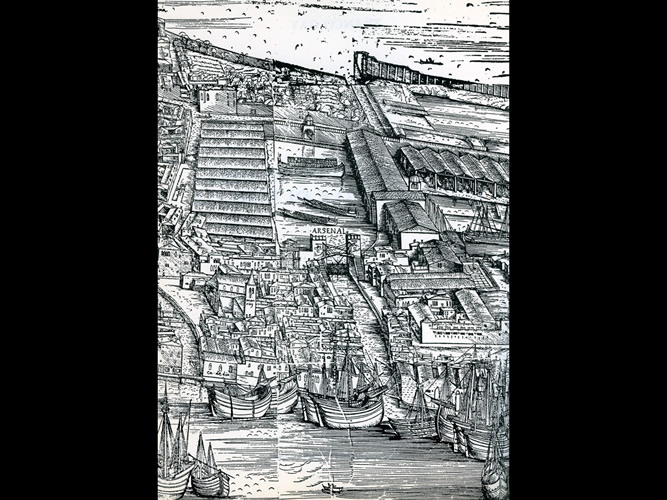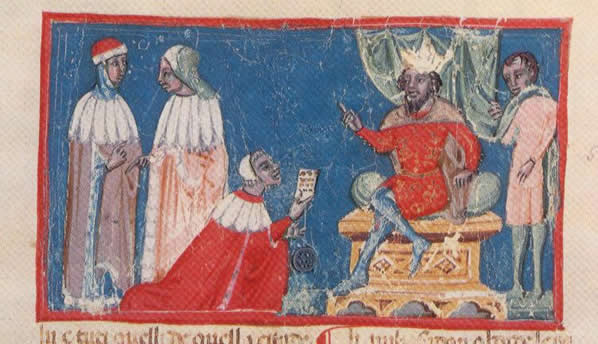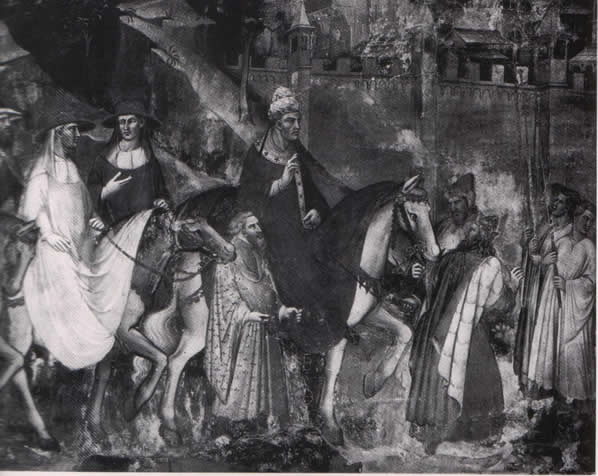The 12th Century was a century of major changes in Venice: the Arsenale shipyards were built, thus becoming the first state-owned industry (1104) ; government was reorganised with the introduction of new procedures for the election of the Doge (1172); the wooden Ponte della Moneta was built (1181) over the Canal Grande, thus joining the administrative and political “civitas” with the market area; the city was divided into the six sestieri we know today and each of these was given a representative in government; the first major palaces were built, while the Doge’s Palace was completely rebuilt after having been damaged in several fires and lost its early fortress look; St. Mark’s Square was restructured and St. Mark’s Basilica was renovated and enriched in 1063-1066 with marble, mosaics and other decorative elements in an oriental style, thus making it “the most beautiful church in the world.”
The fact that Venice was chosen as the place for Pope Alexander III and the Emperor Frederick Barbarossa to meet and reconcile their differences (24th July 1177) brought new benefits: the Serenissima saw international confirmation of its role as a “reliable and prestigious” power.
The city’s image was a matter of great concern and was consolidated by a series of events and liturgies when the symbols of imperial power and the Church were related to symbols of the Doge’s regal status. Ceremonies and traditional rituals gained in strength, such as the “Sposalizio col Mare”, during which the Doge threw a ring into the lagoon to symbolise the city’s union with the water, crucial to Venice’s power and fortunes.





